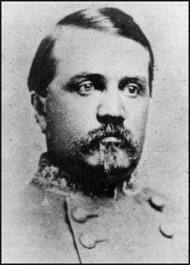William Allen was an officer in the Civil War for the Confederate States of America. He returned home to Alabama after the war to resume his duties as a farmer.

Early Life
- William Allen was born in New York City, New York, to Wade Hampton Allen and Eliza Sayre Allen.
- His father was a business tycoon who had agricultural interests in the South, which resulted in the family moving to Montgomery, Alabama.
- He was accepted into Princeton College, where he studied law.
- After graduation, he continued his study of law but learned that he preferred plantation life.
- He met his wife, Susan Ball, and the two were married on August 13, 1857. The two had eleven children together.
The Civil War
- Once Alabama seceded from the Union and Fort Sumter was fired on, Allen joined the Confederate Army and was made lieutenant of Company A, Montgomery Mounted Rifles.
- Allen became the first major of the 1st Alabama Cavalry.
- He saw some action at the Battle of Shiloh and was promoted to colonel of the regiment.
- During the Kentucky Campaign, he led the Cavalry.
- He saw action at the Battle of Perryville, where he was wounded. Later in the year, he was severely wounded in the Battle of Murfreesboro.
- The surgery to repair his wound left his right hand of little use. Even without the full use of his hand, he returned to the field in 1864.
- He saw more action in the Atlanta Campaign and even contested William Sherman during his March to the Sea.
- In early 1865, Allen's division fought in the Carolinas Campaign and would surrender at Concord, North Carolina.
Later Years
- William Allen returned to Alabama after the war to continue farming.
- He became involved in the railroad industry and served as the state's Adjutant General during the administration of Grover Cleveland.
- He became a United States Marshal in Alabama and helped organize the Confederate Survivors Association.
- His bullet-hole uniform coat and his battle flag are buried in the cornerstone of the Confederate monument in Montgomery.
- In 1893, William Allen moved to Sheffield, Alabama
- In 1894, he died of heart disease.
